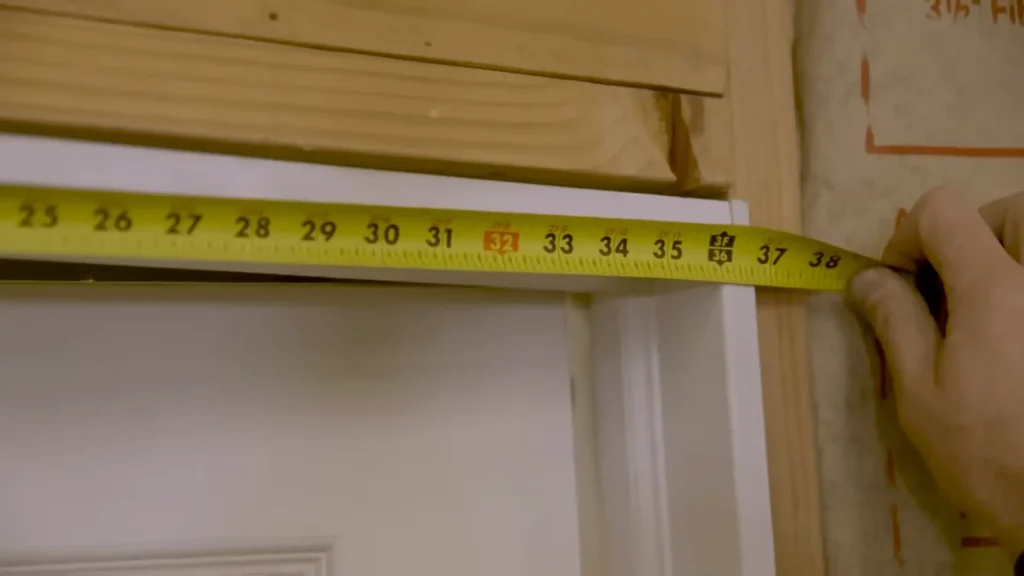How to Measure a Door for Replacement: Simple Steps
Replacing a door can breathe new life into your home, but ensuring a perfect fit is crucial.
The last thing you want is a new door that’s too big or small for the opening.
Luckily, measuring a door for replacement is a straightforward process that anyone can tackle with the right tools and know-how.
This guide will walk you through exactly what you need to measure and how to do it accurately, saving you time and frustration!
Why Measurements Matter

Let’s assume you’ve picked out the perfect door, eager to upgrade your entryway. You haul it home, ready to install it, only to discover it doesn’t fit the frame! This scenario is easily avoidable with precise measurements. An accurate measurement ensures your new door will:
- Slide in smoothly: No gaps or unwanted friction means a seamless installation and a flawless door.
- Maintain proper aesthetics: A well-fitting door looks polished and finished, contributing to the overall look of your space.
- Prevent drafts and noise: A properly sized door creates a tight seal, keeping unwanted elements out and your home comfortable.
Tools You’ll Need:
- Metal tape measure (for better accuracy)
- Pen and paper (to record measurements)
- Optional: Level (for checking if the door frame is upright, especially if replacing the entire unit)
Measuring the Door Slab
The door slab is the main rectangular piece that swings open and shut. Here’s how to measure its width and height:
Width
- Multiple Measurements: Accuracy is key! Take measurements at both sides of the door slab’s top, middle, and bottom. Doors can sometimes warp slightly over time, so taking measurements in several spots ensures you capture any inconsistencies.
- Widest Wins: Use the largest number once you have all your width measurements. This ensures the new door won’t be too narrow for the widest part of the opening.
Height
- Straight Up: Stand the tape measure straight up and down the edge of the door slab.
- Top to Bottom: Start your measurement at the very top of the door and extend the tape measure down to the bottom edge.
Pro Tip: It’s always better to have a slightly larger door than a smaller one. If you find a small discrepancy between your measurements, consider rounding up to the nearest whole inch. However, remember significant size differences will require adjustments to the frame, which might be best left to a professional.
Measuring the Door Frame (Optional):
If you’re replacing the entire door unit, including the frame, you’ll need to measure the frame as well.
Width
- Outside Edges: Measure the width of the frame from the outside edges of the side jambs (the vertical pieces that form the sides of the frame).
- Multiple Spots, Widest Wins: Similar to measuring the door slab, take measurements in multiple spots (top, middle, bottom) and use the widest measurement to ensure a perfect fit.
Depth
- Exclude Trim: The depth of the door frame refers to the thickness of the wall where the door sits. Focus on measuring the actual frame itself, excluding any trim pieces that might be attached.
Height
- Multiple Levels: Measure the height of the frame in several spots. Consider measuring from the floor level where the door sits to the top of the frame (including the lintel, the horizontal piece above the door). Again, use the largest measurement for accuracy.
Additional Tips for Accurate Measurement:
- Metal Magic: A metal tape measure is preferable for its rigidity and accuracy compared to a cloth tape measure.
- Record Everything: Write down all your measurements clearly, labeling them for width, height, and location (e.g., top width, middle height of frame).
- Pre-Hung Heroes: Many doors are sold pre-hung, meaning they come with the frame already attached. If you choose this option, you won’t need to measure the frame itself!
Conclusion
By following these steps, you’ll have all the measurements you need to confidently purchase a replacement door that fits perfectly. Remember, accurate measurements save time, money, and frustration. Once you have your measurements in hand, you can head to your local hardware store or browse online retailers with newfound confidence.
For complex replacements involving extensive adjustments to the frame or if you’re unsure about any aspect of the process, consider consulting a professional installer. They can ensure a flawless installation and address any unforeseen challenges.
Related Articles

